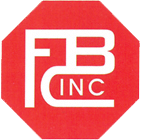TraSys® Semi-Permanent, Water-Based Rubber Mold Release Coatings
Benefits
Molders specify ready-to-use Stoner™ TraSys® semi-permanent water-based rubber release coatings because they:
| TraSys® 9825 MORE INFO |
TraSys® 428 MORE INFO |
TraSys® 818 MORE INFO |
TraSys® 708 MORE INFO |
|
|---|---|---|---|---|
| Release Type | Semi-Permanent | Semi-Permanent | Semi-Permanent | Semi-Permanent |
| Resin Carrier | Water | Water | Water | Water |
| Typical Uses | Injection, Transfer, General-Purpose | Compression Transfer, Injection, Higher Temp. Molding | Compression Transfer, Injection, General-Purpose, Touch-Up | Injection, Transfer, General-Purpose, Compression |
| Compatible Compounds | Fluoroelastomers, NBR, EPDM, Most Compounds | Organic Polymers | Organic Polymers and Natural Rubber | Fluoroelastomers, NBR, EPDM, Most Compounds |
| Apply to Mold | Hot Molding Temperature | Hot Molding Temperature | Hot Molding Temperature | Hot Molding Temperature |
| Min. Cure Temp. / Min. Cure Time |
132°C (270°F) / 5 minutes |
132°C (270°F) / 3 minutes |
132°C (270°F) / 3 minutes |
132°C (270°F) / 5 minutes |
| Maximum Operating Temperature | 190°C (380°F) | 232°C (450°F) | 327°C (620°F) | 205°C (401°F) |
| Agitation Required | Slight | Slight | Yes | Slight |
| Product Cosmetics | Satin | Semigloss | Satin | Satin |
| Affected by Freeze? | No | Yes This product is NOT freeze/thaw stable. |
Yes This product is NOT freeze/thaw stable. |
No |
| Comments | First Choice for Specialty Rubbers, Vamac®, Viton®, Aflas®. Excellent Ability to Bond to Plated or Polished Surfaces | Highest Slip. Good for High-Flow Injection Molding | Good for Rubber to Metal Bonding. Best for Silicone Elastomers. Good Touch-Up for Permanent Fluorochemicals | First Choice for Specialty Rubbers, Vamac®, Viton®, Aflas®. Excellent Ability to Bond to Plated or Polished Surfaces. |
- Non-ozone depleting, noncarcinogenic solvent, No VOC content.
- Hot to the touch; approximately 48°-60°C (120°-140°F).
- Inner mold temperature; normally accomplished by cycling coated mold when empty.
- Air cures rapidly on substrates at 32°-38°C (70°-100°F). Introduction of 149°C (300°F) heat after application enhances cure and prolongs durability of coating.
